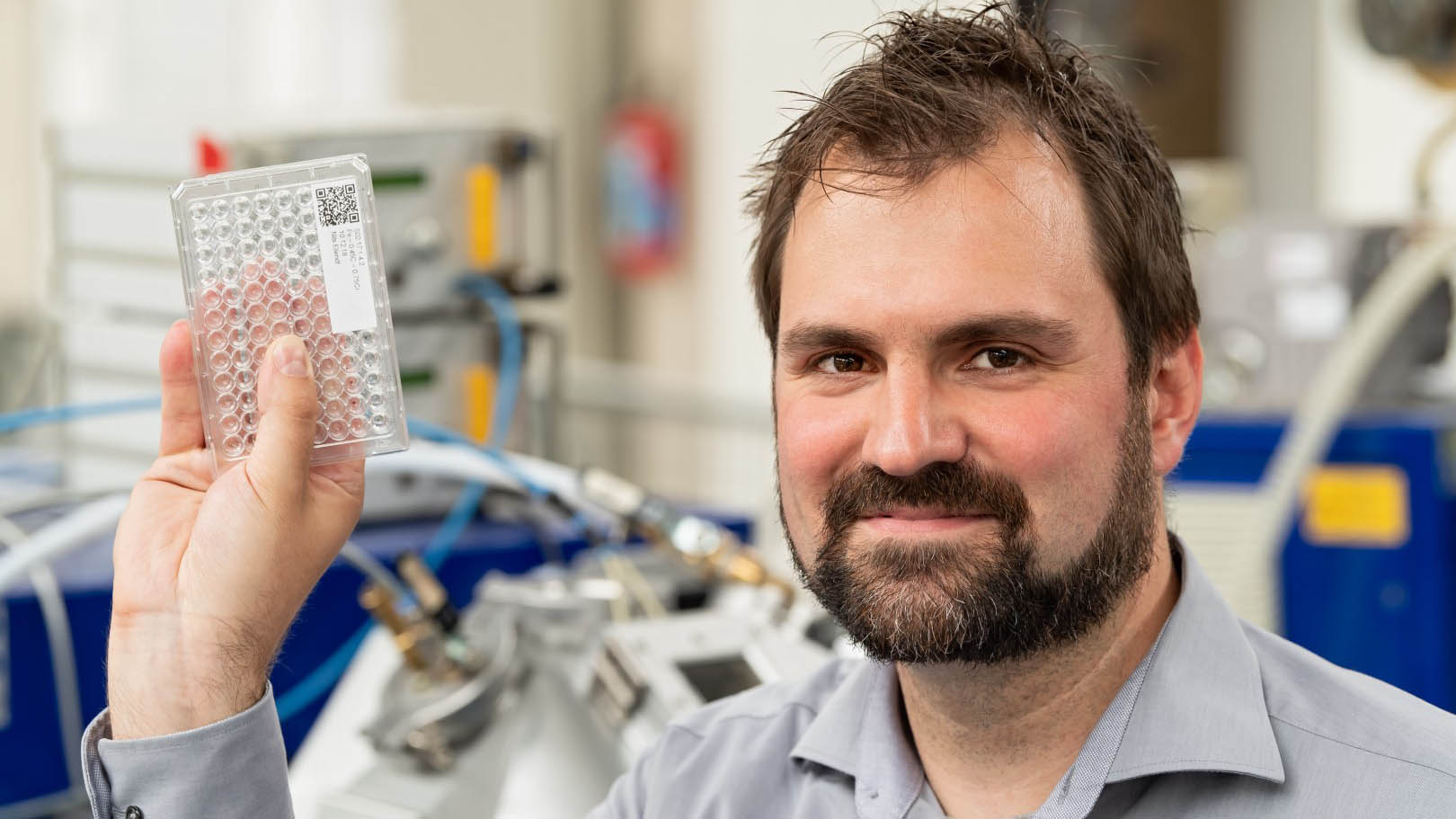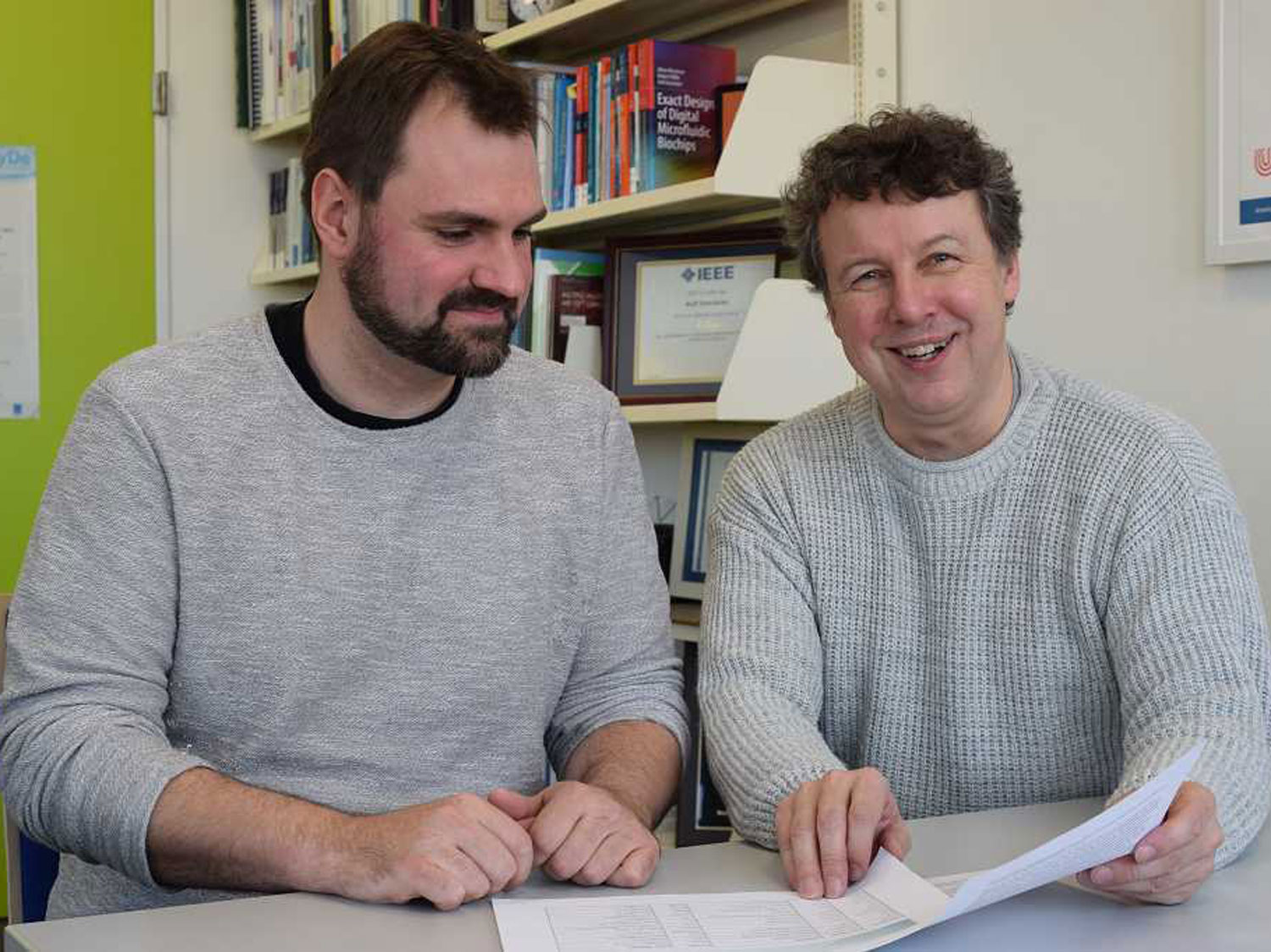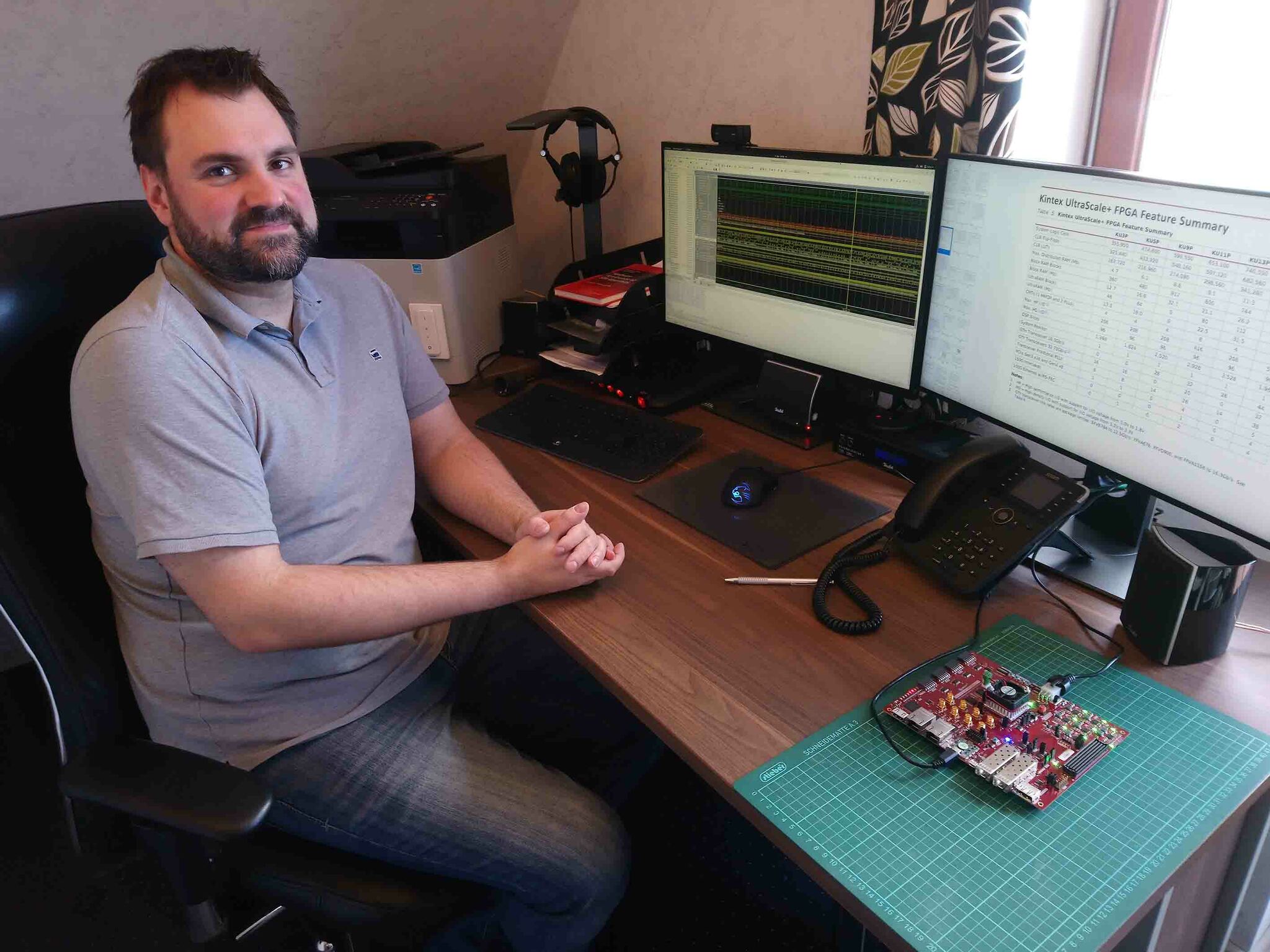
© Jan Rathke
“I’ve Always Had a Passion for Testing”
The academic mid-level sector in focus: Dr. Sebastian Huhn from the Group of Computer Architecture.
Whether desktop computer, tablet, or smartphone: If you are reading this text, you are most likely sitting in front of a computer. A computer consists of hardware and software components, in other words, it has an architecture. And this is exactly what Dr. Sebastian Huhn from the Group of Computer Architecture, headed by Professor Rolf Drechsler from the Faculty of Mathematics and Computer Science, is dealing with. That is the easy part – from here on, it quickly gets quite specialized.
Computer architecture, as most people understand it, is something the computer scientist tackled when he was a high school student: “When I was in my seventh grade, I assembled my first PC. Back then, everything was a bit bigger and simpler than it is today.” He knew early on which direction to take: When Sebastian Huhn graduated from high school – the Cato Bontjes van Beek-Gymnasium in Achim – in 2007, he already knew, he wanted that his career had “something to do with technology.”
That “something” quickly turned into the path he was never to leave: computer science. In 2008, Huhn began his studies at the University of Bremen. “At the time, the bachelor’s degree was still brand new; I could have done a diploma,” he recalls. Because the path felt right, he kept immersing himself deeper and deeper and did his master’s degree. Inevitably, this led to an encounter that was to influence his computer science career: “As early as then, there were project-based courses, and so I soon ended up at Professor Rolf Drechsler’s Group of Computer Architecture – AGRA for short.”
Computer Architecture as a Fundamental Computer Science Tool
“Building a small machine that at the same time can calculate something very quickly” – that was the task in the project-based course. Computer science students hardly get past the Group of Computer Architecture, because Rolf Drechsler holds the introductory lecture “Computer Engineering 1.” Among other things, computer-engineering skills such as computer architecture are taught in this course. Huhn’s master’s thesis, which he submitted in 2014, was on circuit testing using formal techniques.

© Claudia Sobich
At that time, the resident of Oyten was already an integral part of the AGRA team, which he had joined as a student assistant in 2011. “Somehow the subject matter fascinated me, the team was great, and the support from Rolf Drechsler and his people was excellent,” Huhn says today. He also explicitly mentions his “predecessor” Stephan Eggersglüß, who, like Sebastian Huhn later, had pursued a scientific career in the working group and had been supervising Huhn’s master’s thesis. After Eggersglüß’ departure, Huhn himself filled this position.
A Conscious Decision: Science, not Industry
The scientific path was mapped out for him, even though well-paid jobs in industry beckon for smart computer science graduates. Sebastian Huhn, however, set out to complete his doctorate. Stays abroad at Duke University in North Carolina allowed him to delve even deeper into the intricacies of computer architecture. His dissertation focused on the multi-layered architectures of modern computer chips and how to put them through their paces.
How do you ensure that multi-faceted, complex, and complicated hardware and software systems run flawlessly?
This put Huhn in the “heartland” of the Group of Computer Architecture. Whether smartphones, production equipment, or high-performing computer-aided applications used in medicine, automobiles, or attitude control of satellites: “Behind the scenes, highly complex computer chips and electronic circuits are performing their work at breakneck speed. Today, these systems consist of several hundred million individual parts on just a few square millimeters. They are so small that you can see them only, if at all, under a special (scanning electron) microscope. The same applies to the software level: Millions of computer lines are processed to ensure that products run smoothly.
How Do You Test Highly Complex Computer Chips?
The underlying question: How do you ensure that these incredibly multi-faceted, complicated systems, whose “individual parts” are so confusing, actually work flawlessly? How do you test products that have so many individual functions that the interactions between them add up to an unimaginably large number? These are precisely the questions that occupy the Group of Computer Architecture. The fact that the group has been finding useful answers to these questions for many years has helped the group and its head, Rolf Drechsler, to receive numerous awards.

© Kristiane Schmitt
In the midst of it all: Sebastian Huhn. He completed his dissertation in April 2020. “Some of the techniques I developed in it were carried out in close cooperation with Infineon – the best-known chip manufacturer in Germany,” says the 33-year-old. The company produces safety-critical automotive components, among other things, “and with my work, I was able to solve some problems around testing these systems that came up there.” As part of his dissertation, he also had the opportunity to work for nine months in Munich at chip manufacturer Intel in the mobile communications department. There again, Huhn was busy ensuring the testability of the chips: “I’ve always had a passion for testing.”
“I Would Follow the Same Path Again”
The longer you talk to Sebastian Huhn, the more obvious it is: Encountering the topic of testing and his mentor Rolf Drechsler, he found something he is passionate about without any major detours: “If I had to choose again, I would follow the same path.” He is well aware that his specialized subject “sometimes sounds a bit tedious” to people outside the field – but once you get into the subject, there is a lot to be fascinated about.
“If I had to choose again, I would follow the same path.”
In addition, Huhn has also been in touch with “cooler stuff” like artificial intelligence or computer vision, because in addition to the Group of Computer Architecture, he now also works for the German Research Center for Artificial Intelligence (DFKI). “There, I work in the ‘Cyber Physical Systems’ department, which is also headed by Rolf Drechsler.” The fact that the computer scientist is involved in university projects as well as in those of the affiliated DFKI institute is quite normal, he says: “The overlaps and collaborations are intentional.”
Habilitation and Professorship? Why Not!
Because Rolf Drechsler’s working group is “always well positioned in terms of projects,” Huhn is not worried about his future – “and for computer scientists, there are always plenty of opportunities in the private sector, which is reassuring, of course.” In any case, he will continue to work at the University of Bremen and DFKI, as his position was just changed into a permanent contract. This leaves the postdoctoral researcher Sebastian Huhn on an academic path that could well end in a professorship one day: “I can definitely imagine a habilitation. And I am currently attending a further training course – the so-called “University Didactic Qualification” – in order to further improve my teaching. That is something I also really enjoy.”
More information:
Website Group of Computer Architecture